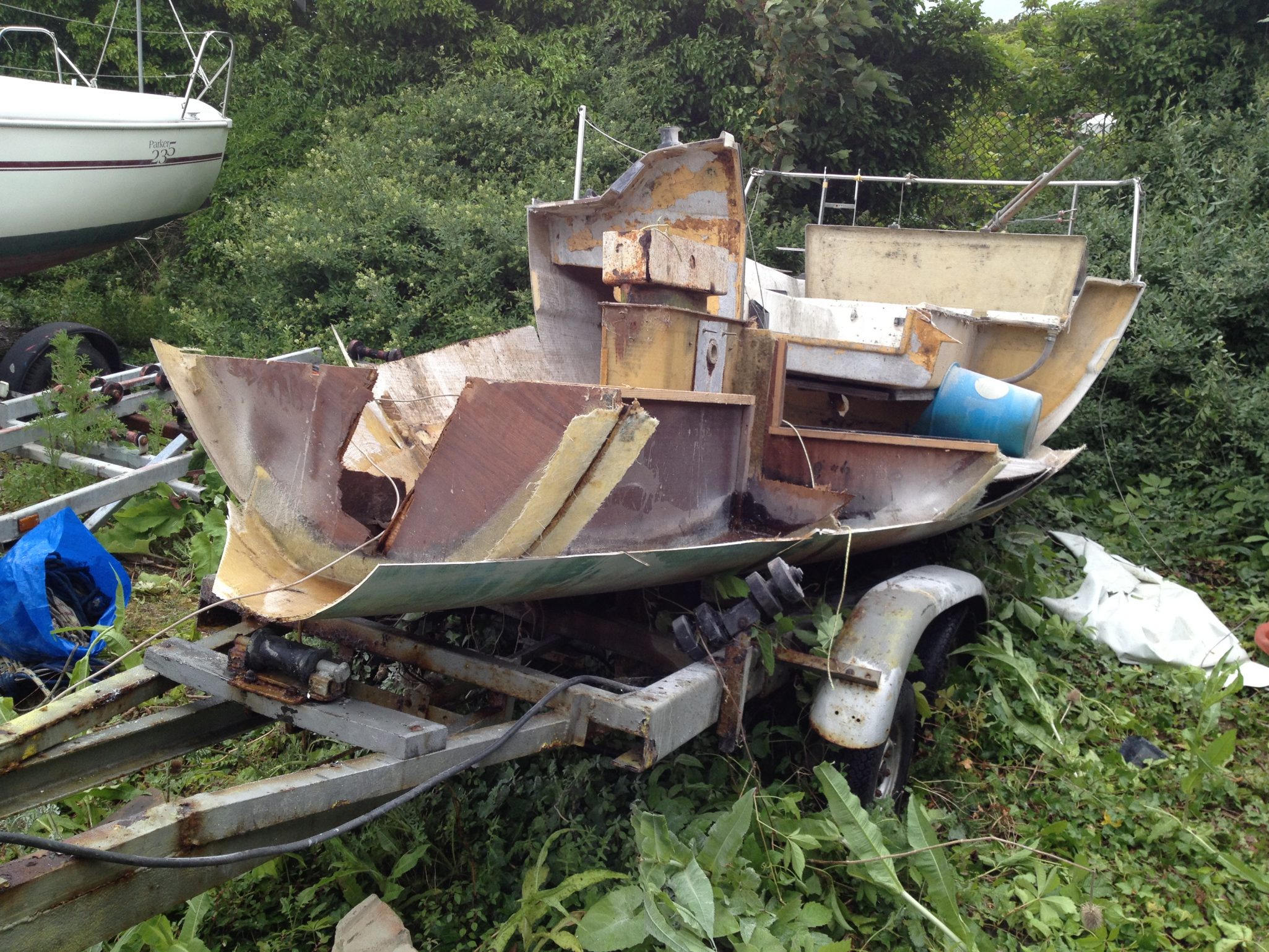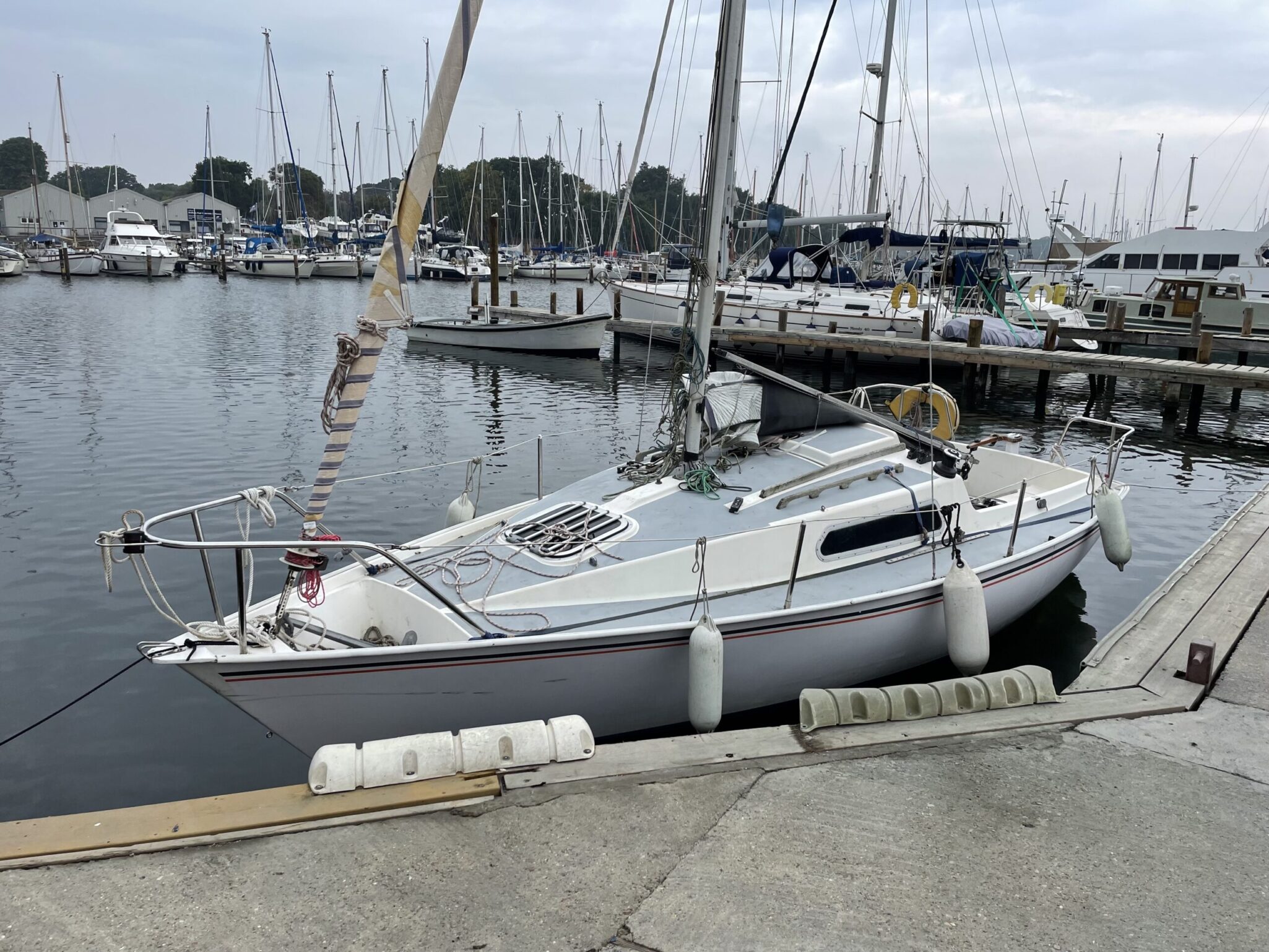Danger of Old Fibreglass Boats

At Boatbreakers we dispose of hundreds of end-of-life boats every year. The majority of the boats we have into the boat scrapyard are older boats that are well beyond economical repair. Whilst the old fibreglass hulls are still strong, our team have noticed that old fibreglass becomes extremely brittle.
We took the chance to discuss this with our resident surveyor Steve. He talked us through what he’s noticed during his years in the world of boat breaking.
Boat Building Process
Initially Steve talked us through the boat building process, “During the build initially the mould is painted with gel coat(the colour). Then 3 layers of either chopped strand or woven roaming impregnated with litres of resin are applied on top of the gel coat.
“At this point the deeper layers that once built, hold the keel(s), engine mounts, mast etc, are packed and strengthened. Usually with marine plywood and further layers of matt.
“This takes a few days/weeks to fully cure. Once ready it’s fitted out and sold as a new yacht or motorboat.
“It’s important to know that boats are not made of just GRP. It also has layers of wood, foam cores, gel coats, resins and paint.
Other GRP Items
“If we were just to consider other items made of GRP. Like roofs, garage doors, garden furniture, cars, etc. These all have GRP as it’s main core. It may just have a single layer of paint but little else so it’s much easier to break up. These items don’t have to provide strength in stress areas like boats. So they can be made using very thin layers keeping it light and strong enough.
“Boats need intrinsic strength building in to support the pressure points. Which are caused by wind, engine mountings, speed over water, people walking and jumping all over it, if it goes aground the sea bed, and finally a trailer if necessary. Thus it’s built in a much stronger heavier way.
GRP Boat Building
“When GRP boats were first built from the late 50’s up to the end of the century builders were not really sure how strong GRP was. So they used many more layers of mat and resins.
“It’s now time to discuss a very disturbing fact. If a GRP vessel is over 30 years the fibreglass has changed from being a flexible and durable structure to a brittle, easy to crack liability.
“We can say this as we are in a unique position. We come from a point of considerable experience.
The Older They Are The Easier The Crunch
“Boatbreakers have broken up hundreds of GRP/fibreglass boats over the years. I can say without exception the older the boat is the easier it is to break up.
“This brings me to the point of this observational piece. If a boat’s structure is significantly weakened through the GRP drying up over a period of years then the vessel’s integrity surely has been compromised making a boat a safety liability.
“This will have a significant impact on the insurance market. As all vessels will be significantly devalued owing to the boat’s lifespan being reduced by possibly 50%. It also impacts on second-hand values.
“GRP is a porous product and if looked at under the microscope it’s clearly visible.
Core Strength Compromised
“Some owners believe in coating the wetter part of the hull with epoxy will seal the porosity and prevent osmosis and maintain its strength. They are right to a certain extent, but all it really does is stop osmosis happening as quickly as it would have normally.
“Whether it’s epoxy coated or not the topsides, deck and coach roof remain untreated and will dry out and become brittle. So although the underwater area of the hull remains flexible for longer if epoxy coated, the rest stiffens up and we are back at my initial point of having a weak, dry hull.
“So in summary, GRP dries out over time. Within 30 years it’s very easy to see during the destruction process it’s core strength is compromised and significantly weakened. I know of no product that can be applied to maintain its strength. Even if there was something how could you effectively apply this?









